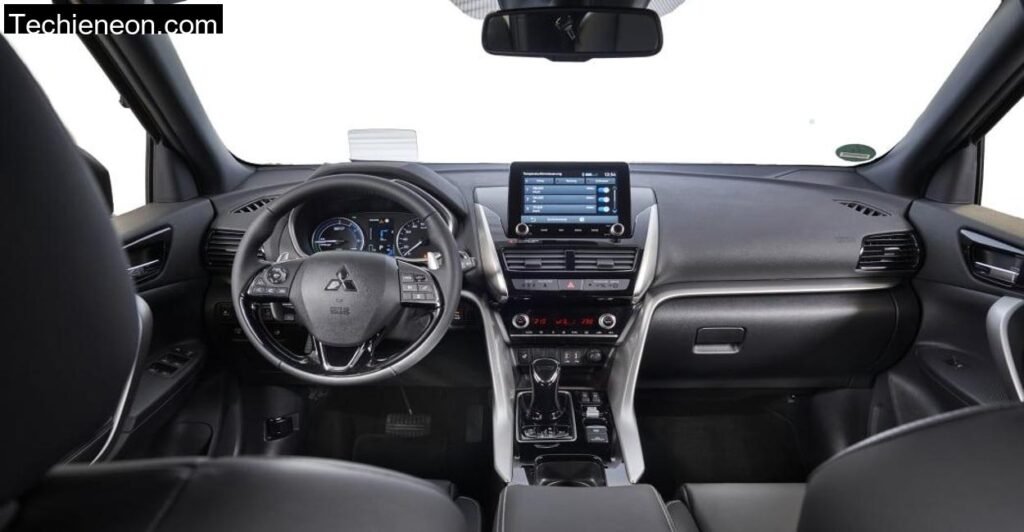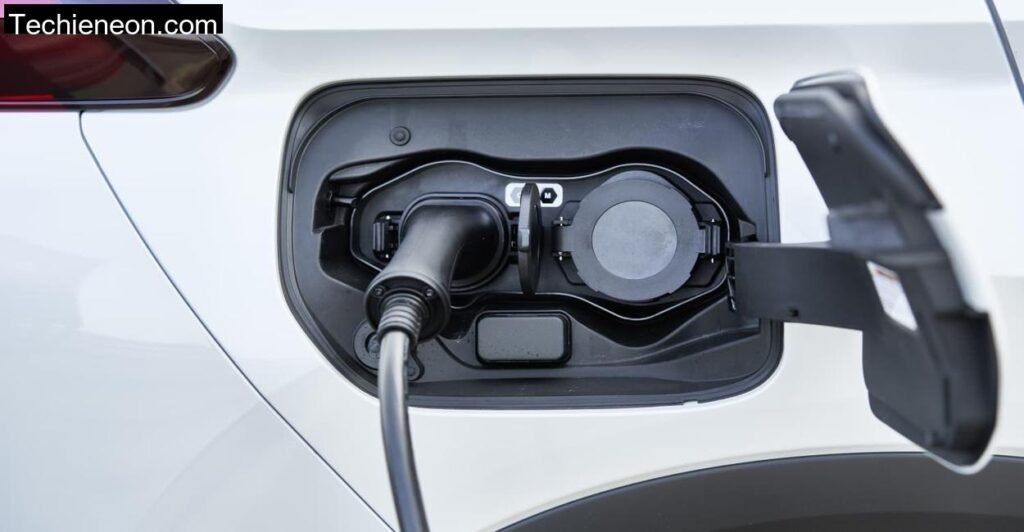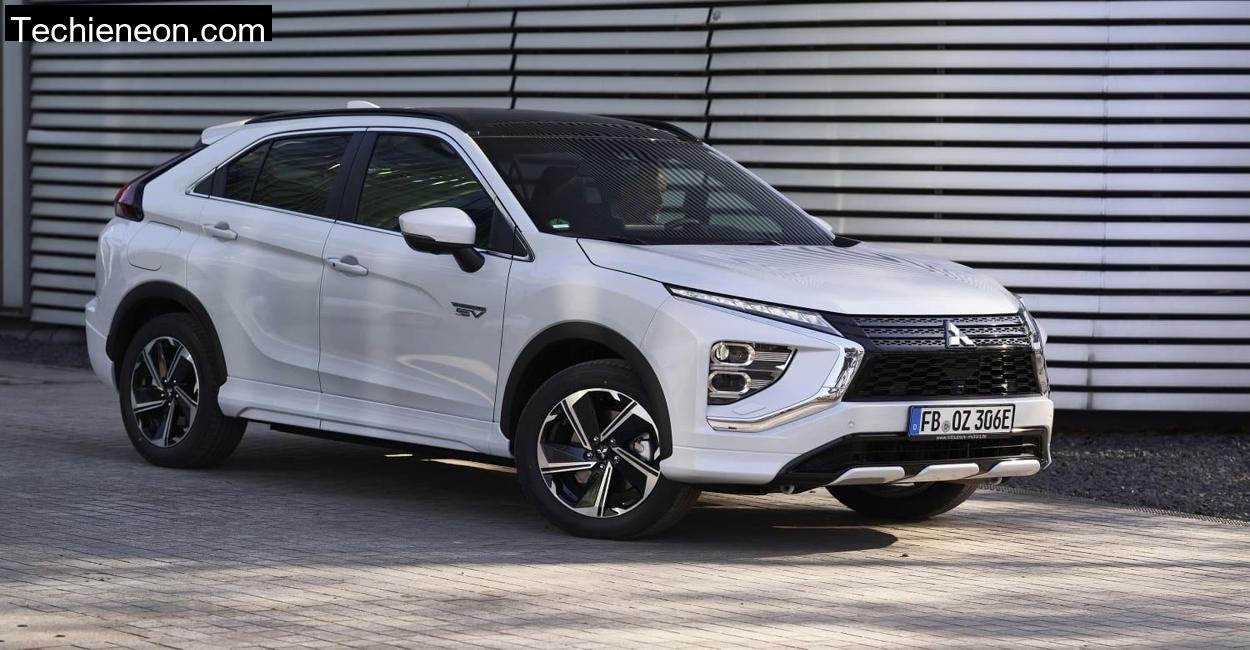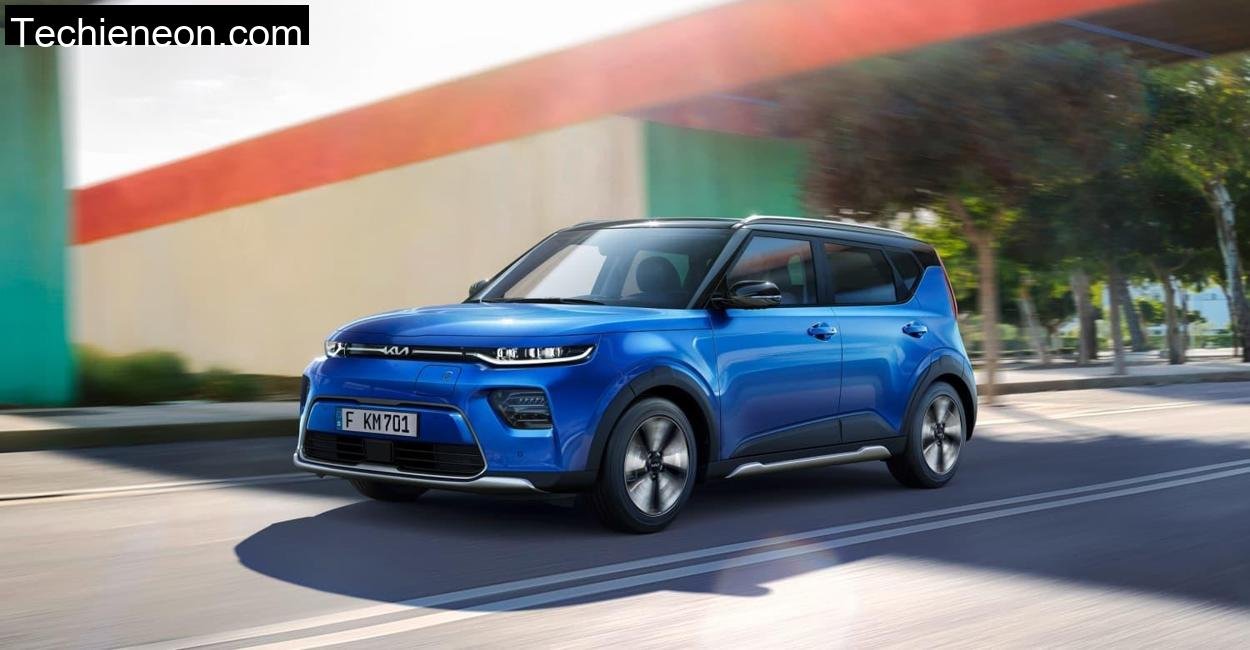High driving comfort in the plug-in hybrid
The Aremberg is known for its elevation changes and winding roads, a perfect stage to explore the Eclipse Cross’s dual nature. And from the first press of the throttle, one thing became clear: this SUV wants to make your life easier. When starting off and driving through the villages of Wimbach and Nürburg, the Eclipse Cross silently glides in full electric mode, delivering that characteristic instant torque without a hint of engine noise. It’s this seamless transition between electric and hybrid driving that Mitsubishi has refined beautifully.
Once the terrain began to climb, the combustion engine joined the chorus, but in a muted, refined tone. Mitsubishi’s engineers have clearly tamed the earlier models’ unruly noise levels. Even under heavier throttle on an uphill hairpin, the engine note stayed controlled, never intrusive. It doesn’t rush to high RPMs unnecessarily, settling at around 3,600 rpm when you demand more. The result? A relaxed yet confident ride.
The suspension soaks up rough patches with ease. The weight of the plug-in system lends the car a solid, grounded feel, which is reassuring as the roads tighten and undulate. The AWD setup kept traction even on damp leaves near the summit. This was not just comfort, it was composed capability.
Save energy in sailing mode

Descending the Aremberg revealed another strength of the Eclipse Cross PHEV: its regenerative braking system. You control the recuperation levels using paddles behind the steering wheel,B1 to B5. But it’s the newly introduced B0 setting that quickly became a favorite. Here, the car just… glides.
No regen. No propulsion. Just pure coasting. On long downhill sections, it felt like floating. There’s something oddly addictive about trying to maintain momentum using only the natural gradient and careful braking. And when you succeed, the dashboard rewards you with a vibrant green tree icon, your trophy for driving like an eco-warrior. It’s gamified efficiency, and it works.
Of course, when I needed more control, switching to B5 allowed me to slow the car almost to a stop without touching the brake. This adaptive approach to energy management makes the Eclipse Cross feel more like a high-tech tool than a traditional car. You’re not just driving, you’re managing energy, choosing your driving strategy in real time.
Eclipse Cross: Wild mix of materials
Step into the cabin and you’re met with… a bit of an identity crisis. The touchscreen infotainment system looks modern, and thankfully Mitsubishi hasn’t abandoned physical buttons, climate control remains pleasingly analog. But the dash is a jumble of textures: shiny piano black, faux carbon fiber, dimpled plastic, and stitched synthetic leather. It’s like the designers couldn’t settle on a theme.
That said, everything feels durable. And more importantly, it works. The knobs turn with a satisfying click, the buttons respond immediately, and the infotainment system, while a bit menu-heavy, is logical once you learn the layout.
One annoying quirk: Some functions are only adjustable through the central screen, others via the driver display. It takes a moment to remember which is which. But once on the move, you forget the odd mix of trim and focus instead on the drive, where the Eclipse Cross feels more cohesive than its materials suggest.
Plenty of space in the Eclipse Cross
The Aremberg’s forest roads can make you feel like you’re miles from civilization, until you realize you’ve brought half of it with you. The Eclipse Cross excels in cabin space. At 1.90 meters tall, I had ample legroom and headroom up front and in the back. My camera gear, drone, and cold-weather kit all fit without issue.
The rear seatback angle feels a bit too reclined by default, but you can adjust it forward to a more upright, and comfortable, position. The trunk, at 345 liters, isn’t massive, but it’s well thought out. Under the floor is a hidden compartment, perfect for storing the charging cables, triangle, and some emergency snacks.
With the rear seats folded down, it’s a whole different story. Over 1,200 liters of space means you can easily fit bikes, tents, or even a dismantled electric scooter. This is a real adventurer’s companion.
Fast charging only with Chademo plug

Now for the kicker: fast charging. The Eclipse Cross supports DC charging via the Japanese CHAdeMO standard. And here in Europe, that’s becoming rare. So unless you live near a compatible station, you’ll be relying on slower AC charging through a standard Type 2 plug.
On my test, I mostly charged using a wallbox at home. A full charge took around four hours. Public charging at 3.6 kW took about the same. The DC fast-charging test was… illuminating. Up to 19.6 kW is possible, but only briefly. The battery charges rapidly to about 80% in 25 minutes, then crawls from there.
This isn’t the car for rapid road trips with quick top-ups. But as a commuter that’s charged overnight or during work hours, it fits the bill just fine.
Bonus feature: there’s a 230V outlet in the boot. I plugged in a coffee maker while overlooking the valley from the summit. That’s what I call civilized adventuring.
All-round service from the manufacturer
Mitsubishi has gone the extra mile to make this car hassle-free. Each unit is offered with a five-year warranty and Mitsubishi’s “plug & play” ecosystem: wallbox installation, mobile charging card, and a commitment from local dealers to provide full onboarding support. You’re not just buying a car, you’re stepping into a support network.
This might be the final Eclipse Cross, but it doesn’t feel abandoned. In fact, it feels like Mitsubishi is trying to send it off with dignity.
Technical Specification
| Specification | Value |
| Model | Mitsubishi Eclipse Cross 2.4 PHEV Plus 4WD |
| Engine Type | Plug-in Hybrid |
| Combustion Engine Displacement | 2,360 cc |
| System Power | 138 kW / 188 HP |
| Electric Range (WLTP) | 45 km |
| CO₂ Emissions (WLTP) | 46 g/km |
| Combined Consumption (WLTP) | 2.0 l/100 km + 17.5 kWh/100 km |
| Real-World Consumption | 4.6 l/100 km + 11.0 kWh/100 km |
| Battery Capacity (gross) | 13.8 kWh |
| Charging (AC) | 2.3 – 3.7 kW |
| Charging (DC – CHAdeMO) | Up to 19.6 kW |
| 0-100 km/h | 10.9 seconds |
| Top Speed | 162 km/h |
| Drive Type | AWD |
| Trunk Volume | 359 L (1230 L with seats folded) |
| Towing Capacity (braked) | 1,500 kg |
| Base Price | €45,590 (€33,990 with discount) |
| Warranty | 5 years / 100,000 km |
Conclusion
Driving the Mitsubishi Eclipse Cross PHEV through the winding roads of the Aremberg wasn’t just a test, it was a glimpse into what this plug-in hybrid can be when treated with intention. It’s not a speed demon, and it won’t win beauty pageants inside or out. But it’s dependable, comfortable, clever, and capable of real electric driving, if you take the time to plug it in.
It asks for your cooperation to function at its best. In return, it gives you near-silent commutes, low running costs, and a backup engine when you want to escape to the hills.
For €33,990, with discounts and a supportive dealer network, it might just be one of the most underrated eco-SUVs you can still buy, while it lasts.



Leave a Comment